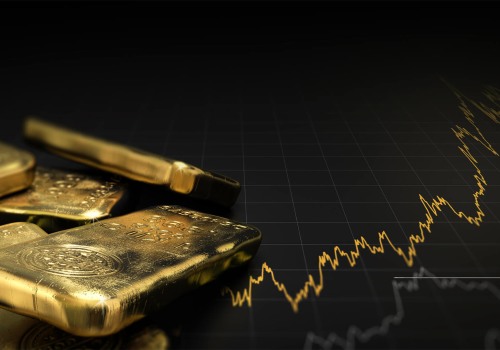Paper gold is a type of asset that represents the price of gold, but it's not really gold; it's not backed by a real metal, so only paper is worth it. Having gold on paper allows you to be exposed to the price of gold without having to own real ingots, and is more beneficial for trading than for long-term investment. One of the two most common ways to accumulate gold is to buy “paper gold”. Paper gold refers to investing in exchange-traded funds (ETFs) that in turn invest in gold or in gold futures and options.
The other method is to buy gold, usually in bullion or coins. On the other hand, paper gold is the term applied to investments that cover exchange traded funds or gold ETFs. If you're familiar with how mutual funds work, gold ETFs won't blow your mind. Basically, your fund buys a certain amount of gold and issues shares of that fund.
In theory, the value of your shares will keep pace with the price of gold and, as a result, will rise and fall. Paper gold gives you the opportunity to benefit from the price increase without worrying about storage, impurities, theft, etc. It's a better idea to invest in financial assets. Among these, if you want to invest in gold, I would say that SGBs are the best possible instrument, Sadagopan says.
With “paper” gold, risks and storage costs are eliminated, since the investor can “store” investments in a demat way. You could also have digital gold, which has no safety or purity issues, Agarwal says. Physical gold will always provide the most direct exposure to gold, especially compared to paper gold. All investments in paper gold carry this risk, since the investor enters into a contract with a third party.
Gold futures are contracts concluded by investors, who commit to receiving gold on an agreed date at a certain price. Investing in gold on paper refers to the purchase of an asset that is not tangible, but is represented on paper. Depending on your investment strategies, using a gold ETF in your portfolio has a lot of positive aspects. While physical gold was previously considered a great form of investment, this is no longer the case for several reasons.
While physical gold maintains its value and is easily liquidated, bought and sold, paper gold is the victim of increasing oversight and regulatory requirements, as well as counterparty risks and potential collapse. It's also soft and the most malleable and ductile of the elements; an ounce (31.1 grams; gold is weighed in troy ounces) can be beaten up to 187 square feet (about 17 square meters) into extremely thin sheets called gold leaf. During uncertainties caused by financial or political turmoil, many financial institutions that act as counterparties to gold paper will be negatively affected, which will have a ripple effect on the value of gold paper. Given the difficulties associated with physical gold as an investment, it would be better for an investor to look for other options, such as gold on paper.
Just as physical gold is not tied to a government or financial system, neither is the ownership of physical gold. In contrast, paper gold in and of itself has no intrinsic value, since its value depends on the issuer and the conditions of issuance, not necessarily just on the underlying gold. And while other investments and fiat currencies have come and gone, physical gold is still highly valued, even after thousands of years. If the costs or difficulties involved in physical or paper gold don't influence you in one way or another, many people find ways to allow their investment portfolio to include both.







